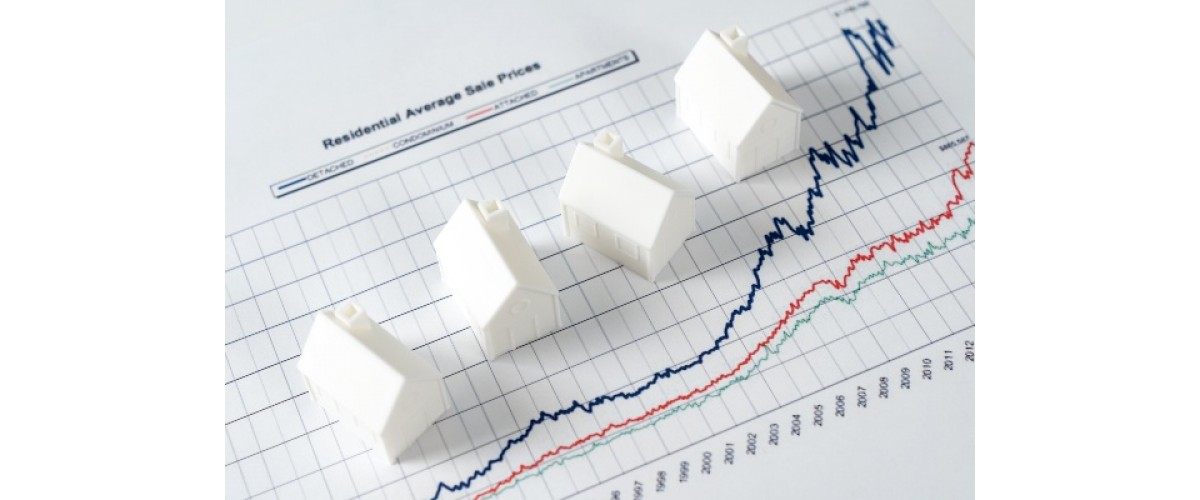Understanding Cap Rate in Real Estate: A Practical Guide for Professionals
Understanding how to apply and accurately calculate the Cap Rate is crucial for real estate professionals.
This key metric, known as the Capitalization Rate, helps assess the profitability of investment properties, enabling agents to provide precise and informed advice to their clients.
In this article, we’ll break down the fundamentals of this concept, walk you through the calculation process, and highlight its significance in the real estate industry.
What is Cap Rate?
The Cap Rate is a vital metric in real estate used to estimate the rate of return on an investment property. It’s calculated by dividing the property’s Net Operating Income (NOI)—the annual income generated by the property after operating expenses—by the property’s current market value. The result, expressed as a percentage, reflects the potential return on the investment.
Cap Rate = (Net Operating Income / Current Market Value) x 100
For example, if a property has a Net Operating Income of $50,000 and is valued at $1,000,000, the Cap Rate would be:
Cap Rate = ($50,000 / $1,000,000) x 100 = 5%
This 5% Cap Rate suggests that the property is projected to yield a 5% annual return, assuming rental income remains steady and the property’s market value does not fluctuate. While the Cap Rate offers a quick snapshot of profitability, it’s crucial to consider other factors when making investment decisions.
Importance of Cap Rate for Real Estate Professionals
For real estate professionals, understanding the Cap Rate is essential for evaluating investment properties and providing clients with informed advice. This metric allows professionals to quickly assess how well a property might perform in generating income relative to its value.
By effectively using Cap Rate, agents can:
- Compare Investment Opportunities: The Cap Rate helps professionals compare different properties on a consistent basis, assisting clients in identifying which investments may offer better returns.
- Guide Investor Decisions: Whether clients are new to investing or experienced professionals, the Cap Rate provides a clear, straightforward metric that can guide decisions on whether to buy, hold, or sell a property.
- Set Realistic Expectations: Analyzing the Cap Rate allows agents to help clients set realistic expectations about potential returns, which is crucial for long-term investment success.
While the Cap Rate is a valuable tool, it should be used alongside other financial indicators to provide a comprehensive view of an investment’s potential.
Factors That Affect Cap Rate
The Cap Rate of a property can be influenced by several factors that real estate professionals must understand to give nuanced advice. Here are some key elements that impact Cap Rate:
- Location: The property’s location is one of the most significant factors. Properties in high-demand areas typically have lower Cap Rates due to higher property values, while those in less desirable locations might offer higher Cap Rates but come with increased risk.
- Market Conditions: Economic factors, such as interest rates, market demand, and overall economic growth, can influence Cap Rates. In a booming market, property values may rise, leading to lower Cap Rates, while a downturn might result in higher Cap Rates as property values decrease.
- Property Type and Condition: Different types of properties—residential, commercial, industrial—often have varying Cap Rates. Additionally, a property in excellent condition may command a lower Cap Rate compared to one that requires significant repairs, as the latter involves more risk.
- Tenant Stability and Lease Terms: Properties with long-term, reliable tenants may show lower Cap Rates, reflecting their stable income stream. Conversely, properties with short-term leases or higher vacancy rates might have higher Cap Rates due to the associated uncertainty.
Understanding these factors allows real estate professionals to provide more nuanced advice, ensuring that Cap Rate is used effectively as part of a broader investment analysis.
Limitations of Cap Rate and Its Complementary Metrics
While the Cap Rate is a useful tool for evaluating the potential profitability of a property, it has its limitations. Relying solely on Cap Rate can lead to an incomplete or misleading assessment of an investment. Here are some key limitations and why it's important to consider complementary metrics:
Ignores Financing and Leverage: Cap Rate calculations do not account for how a property is financed. Whether purchased with cash or through a mortgage, the Cap Rate remains the same, even though the actual return on investment can vary significantly depending on financing terms. To get a fuller picture, consider metrics like Cash-on-Cash Return or Return on Investment (ROI), which take leverage and financing into account.
- No Consideration of Future Cash Flows: The Cap Rate is based on current income and market value, without factoring in potential future changes in income or property value. Factors like rent increases, renovations, or market appreciation aren’t reflected in the Cap Rate. For a more comprehensive analysis, investors should also look at the Internal Rate of Return (IRR), which considers the time value of money and future cash flows.
- Static Snapshot: Cap Rate provides a snapshot of a property’s performance at a specific moment in time. It doesn’t account for changes in market conditions, economic shifts, or property management strategies that could affect a property’s profitability over time. Using tools like Discounted Cash Flow (DCF) analysis can help project future performance and provide a more dynamic view.
- Varies by Property Type and Market: Cap Rates can differ widely depending on the property type and local market conditions. A “good” Cap Rate in one market may be considered low in another. It’s important to compare Cap Rates within the context of similar properties and local market trends.
In summary, while the Cap Rate is a valuable starting point for evaluating real estate investments, it should be used alongside other financial metrics to provide a more accurate and holistic view of a property’s potential. By considering these complementary metrics, real estate professionals can offer better-informed advice, ensuring that all aspects of an investment are thoroughly evaluated.
Practical Application for Real Estate Professionals
Knowing how to calculate and interpret Cap Rate is essential, but applying this knowledge in real-world scenarios truly sets a real estate professional apart. Here’s how you can effectively use Cap Rate in your practice:
- Assessing Investment Properties: When evaluating a property for a client, start by calculating the Cap Rate to provide a quick estimate of the property’s potential return. For example, if a client is considering multiple properties, use the Cap Rate to compare their relative profitability, helping clients make informed decisions about where to invest.
- Setting Client Expectations: Use the Cap Rate to help clients set realistic expectations about the income they can expect from a property. For instance, if a client is looking at a property with a lower Cap Rate, explain that while it might offer lower immediate returns, it could be a safer, more stable investment. Conversely, a higher Cap Rate might suggest higher returns but with greater risk.
- Supporting Pricing Strategies: If you're working with a seller, understanding the Cap Rate can help you set a competitive price for the property. By comparing the Cap Rate of your client’s property with those of similar properties on the market, you can justify the asking price to potential buyers or adjust it to make the property more attractive.
- Identifying Market Trends: Monitor Cap Rates in your local market to identify trends that could impact property values and investment decisions. For example, if Cap Rates in a particular area are declining, it may indicate rising property values and lower expected returns, signaling a shift in the market that could affect buying and selling strategies.
- Advising on Property Improvements: If a property has a low Cap Rate, consider advising your client on improvements that could increase the Net Operating Income (NOI) and, consequently, the Cap Rate. This might involve renovations, better property management, or strategies to reduce operating expenses.
By incorporating Cap Rate analysis into your daily practice, you can provide clients with clear, data-driven insights that enhance their decision-making process. Whether you're helping them evaluate potential investments, set prices, or make improvements, the Cap Rate is a powerful tool that can lead to more successful outcomes in the competitive real estate market.
Conclusion
The Cap Rate is a vital tool in the real estate professional's toolkit, offering a straightforward way to assess the potential profitability of investment properties. While it’s not without its limitations, when used alongside other financial metrics, the Cap Rate provides valuable insights that can guide clients toward making informed decisions. Whether you’re helping clients compare properties, set realistic investment expectations, or identify market trends, mastering the Cap Rate is essential for success in today’s competitive real estate landscape.
Ready to elevate your real estate career?
Join thousands of successful professionals who have trusted Florida Real Estate School to boost their expertise. Whether you're just starting out or looking to advance, our comprehensive real estate courses will equip you with the knowledge and skills needed to excel. Enroll today and take the next step toward becoming a top-tier real estate professional.
FAQs
What is the Capitalization Rate (Cap Rate) and how is it calculated?
The Capitalization Rate, or Cap Rate, is a key metric used to evaluate the potential return on an investment property. It is calculated by dividing the property’s Net Operating Income (NOI) by its current market value, then multiplying by 100 to express it as a percentage. For example, if a property generates an NOI of $50,000 and is valued at $1,000,000, the Cap Rate would be 5%.
Why is the Cap Rate important for real estate professionals?
The Cap Rate is crucial for real estate professionals as it allows them to quickly assess and compare the profitability of different investment properties. It helps agents provide informed guidance to clients, aiding them in making decisions about buying, holding, or selling properties based on their income-generating potential relative to their market value.
What factors can influence a property's Cap Rate?
Several factors can affect a property's Cap Rate, including its location, market conditions, property type and condition, and the stability of tenants and lease terms. Properties in desirable areas may have lower Cap Rates due to higher values, while those in less sought-after locations may offer higher Cap Rates but come with more risk.
What are the limitations of using Cap Rate in real estate analysis?
While Cap Rate is a useful tool, it has limitations, such as not accounting for financing methods, ignoring potential future cash flows, providing only a static snapshot of performance, and varying significantly across property types and markets. To get a more comprehensive understanding, it’s important to consider complementary metrics like Cash-on-Cash Return, Internal Rate of Return (IRR), and Discounted Cash Flow (DCF) analysis.



